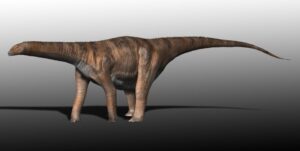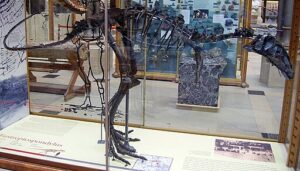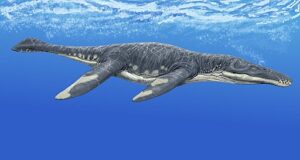Megalosaurus
- When: Middle Jurassic
(166–160 mya) - Where: Europe
- What: Theropod
- Weight: 1–2 tons
- Length: 9–10 meters
- Diet: Carnivorous
- Discovered: 1824
The Middle Jurassic period, spanning from approximately 174 to 163 million years ago, was a pivotal time in the history of Earth, marked by significant geological, climatic, and biological changes. This period set the stage for the rise of many iconic dinosaurs and saw the continued breakup of the supercontinent Pangaea.
During the Middle Jurassic, the supercontinent Pangaea continued to rift apart, leading to the formation of new oceans and the separation of landmasses. This tectonic activity created diverse environments, including coastal areas, inland seas, deserts, and lush forests. The climate during the Middle Jurassic was generally warm and humid, with higher sea levels and an absence of polar ice caps, creating widespread shallow marine environments.
The Middle Jurassic period saw the diversification of many dinosaur groups, which began to dominate terrestrial ecosystems. Some notable dinosaurs from this time include:
Marine environments flourished during the Middle Jurassic, with abundant life forms including marine reptiles, fish, and invertebrates:
Pterosaurs, the flying reptiles, continued to evolve and diversify during the Middle Jurassic:
The vegetation of the Middle Jurassic was dominated by conifers, cycads, and ferns. These plants formed the primary food source for the large herbivorous dinosaurs. The warm, humid climate supported dense forests and lush vegetation, creating diverse habitats for a variety of plant-eating dinosaurs.



